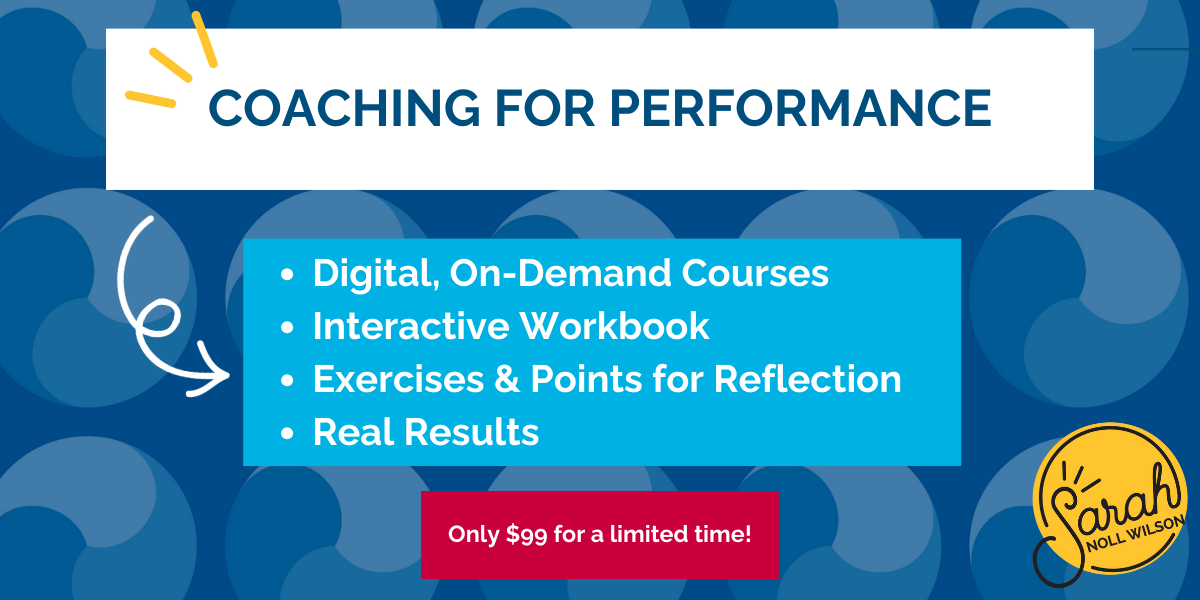
A high-performing organization is built of individuals working together effectively to achieve a common goal. In pursuit of this corporate culture, talent development teams are often tasked with creating and supporting a leadership pipeline filled with diverse, high-performing team members ready to take on leadership roles as they become available.
Ready-to-implement leadership pipeline development plans are especially relevant when a company may need to fill leadership positions quickly during change or transition. And it all starts with your people leaders’ ability to identify and nurture top talent at all levels of the organization.
The Benefit of Identifying and Nurturing Organizational Top-Talents
We often encourage our coaching clients to create a regular practice of identifying and developing top talents, which can bring several tangible and intangible benefits to an organization.
Increased Organizational Agility
Organizational agility refers to the ability of an organization to quickly and effectively respond to changes in its internal and external environment. This includes adapting to new situations, making decisions quickly, and pivoting strategies as needed. Organizational agility is essential because it allows an organization to stay competitive in an increasingly fast-paced and unpredictable world.
Several factors can contribute to organizational agility, including:
- Intentional decision-making: Organizations with a culture of rapid decision-making are better able to respond quickly to changes in their environment, but I also argue that when you choose to be intentional about exploring possibilities, you can create a culture of agility that prioritizes curiosity.
- Deeper collaboration: Collaboration across teams and departments can help an organization be more agile by enabling it to share information and ideas quickly.
- A culture of experimentation and innovation: Organizations that encourage innovation and experimentation are more likely to have increased agility because they are open to stepping into the discomfort that often comes with adapting to change.
- A culture of curiosity: An organization that takes a Curiosity First Approach to learn and development will find itself in a state of sustained resiliency, meaning it can better adapt to change because it is already in a state of constant evolution.
By focusing on these factors, organizations can increase their agility and be better prepared to respond to environmental changes. Top talents are often highly skilled and adaptable, which can help an organization be more agile and responsive to changing conditions.
Simplified Leadership Succession Planning with a Strong Pipeline
Leadership succession planning involves identifying individuals who have the potential to become leaders within an organization and supporting their development through individualized mentoring, coaching, and development.
Succession planning ensures that the organization has a strong pool of qualified, value-aligned leaders ready to step into roles as they become available. This can be especially pertinent during unexpected changes or transitions when a company may need to fill leadership positions quickly. It can also help increase team member retention and reduce turnover, as team members who see opportunities for advancement within the organization are more likely to stay.
Improved Team Member Performance
High-performing team members, or top talents, make significant contributions to the success of an organization when they are in their roles as individual contributors. By developing these individuals through personalized coaching opportunities, an organization can improve its overall performance and achieve its goals more effectively.
High-performing team members can benefit from leadership coaching in several ways, including:
- Helping them develop greater self-awareness so they can show up as their best self in every situation.
- Facilitating the identification and discovery of leadership ideals to bridge the gap between their intention and their desired future impact.
- Provide your team members with explicit tools and skills to be more effective leaders, such as communication skills, problem-solving skills, and conflict management.
- Assisting them in developing their identified leadership and career goals in a sandbox environment that facilitates experimentation.
- Providing regular expert feedback and support to help build their confidence, develop a growth-oriented mindset, and further improve their performance.
Personalized, one-to-one leadership coaching for your emerging top talent is a valuable tool for helping your team member’s continued growth and development as both a current individual contributor and as a future organizational leader.
Reduced High-Performing Employee Attrition
Beyond personal reasons, many other factors can cause high-performing team members to leave an organization. Some common themes we hear from clients include:
Lack of career advancement opportunities: High-performing team members often want to continue learning and growing. They may leave an organization if they have reached a dead end regarding career advancement.
Insufficient leadership: All team members rely on their leaders for guidance, support, and direction. Suppose your team members, particularly your high-performers, feel that their leaders are not providing this support. In that case, they may become demotivated and disengaged, leading to poor performance and eventually an exit from the organization.
Toxic work environment: A toxic work environment characterized by a negative corporate culture and a lack of support from management can be highly damaging to a team member’s well-being and morale. High-performing team members may leave an organization if they feel that the work environment is not supportive or positive.
Lack of resources: High-performing team members often rely on access to job-essential resources and mentorship support to do their jobs effectively. If they feel they are not being provided with the needed resources, they may become frustrated and consider leaving.
Low pay: Top talent expects to be compensated fairly for their contributions to an organization. If they feel that their compensation is not commensurate with their performance, they may become demotivated and consider leaving.
Investing in developing high-performance team members can show your commitment to supporting, nurturing, and compensating your top talents. This can save the organization time and resources that the organization would otherwise spend recruiting and training new team members.
Enhanced Organizational Market Reputation
An organization known for identifying and developing top talent will likely be viewed more positively by both team members and external stakeholders. And when job markets continue to be volatile for job seekers and posters, an incredible reputation can take you a long way in attracting and retaining a valuable, productive workforce.
How to Identify High-Performing Team Members
While we’ve discussed in-depth what would attract the most qualified talent in your industry, the reality is that “high-performing” and “top talent” are subjective, open to interpretation, and can vary from person to person.
This can be a challenge when it comes to identifying and developing top talent within an organization.
One reason for the subjectivity of these labels is that different people may have different definitions of what constitutes high performance. For example, we’ve spoken with some clients who view high performance as meeting or exceeding specific targets or benchmarks. In contrast, other clients tend to focus more on qualities such as innovative thinking and proven leadership skills.
Similarly, some view top performers as those who inhabit a particular role, while others still focus on an individual’s potential for growth and development. And we’ve all experienced a leader who is likely to label someone as high-performing because they have a similar background or personality or share the same values or beliefs.
Instead, I encourage you to focus on the potential for growth and development inhabited by your team members, particularly in a way that aligns with your senior leadership’s vision for the organization.
How to Measure High-Performance
As a leader, you are likely focused on more complex strategic work that may reduce your interactions and visibility into a team member’s day-to-day performance. Depending on where team members sit within the organization in relation to your role, you may need to be intentional in creating interactions and opportunities for feedback.
This reduced view can sometimes limit your ability to accurately assess the performance of top-talent team members in your organization.
There isn’t going to be a single rubric we can hand you to find the team members that fit your organization’s needs (as you may know, I’m a big fan of measuring by your own yardstick). There are, however, several objective and subjective measures you can add to your toolkit.
Objective Measurements of Top Talent Team Members
Objective measurements evaluate team member performance based on quantitative criteria rather than subjective opinions or personal perceptions. Some objective measures that managers might use to identify high-performing team members include:
- Qualitative output metrics: Managers can use metrics such as sales numbers, productivity, or customer satisfaction scores to evaluate team member performance objectively. Errors and attention to detail may also be included here, but remember that bigger-picture thinking is often preferred over detail orientation in leadership.
- Key performance indicators (KPIs): Choose specific, quantifiable targets that give a complete picture of your team member’s contribution to the organization’s success.
- Presence: While attendance and punctuality may paint a complete picture of your team member’s visibility within the organization, I would encourage you to temper it with context and other subjective criteria. As someone dedicated to quality, not quantity, of work, while this can be useful in some contexts, some of the most productive colleagues I’ve worked with worked less intentionally.
Subjective Measurements of High-Potential Team Members
Subjective measurements are evaluations of team member performance based on opinions or personal perceptions rather than objective, measurable criteria. Options for subjective measurements used to identify high-performing team members include:
- Personal evaluations: Managers may rely on their assessment of team member performance based on their observations or interactions with the team member.
- Peer evaluations: In-depth colleague and peer interviews can be used to evaluate team member performance and can often uncover day-to-day habits and behaviors to which you may not otherwise have visibility.
- Customer or client feedback: If your team members are in outward-facing roles, you may collect customer and client feedback to look at a team member’s performance.
You may need to use a combination of objective and subjective measurements when evaluating team member performance to get a well-rounded view of their strengths and areas yet to be developed. One example of this could be a Gap Audit, wherein you and your team members complete a trust-based 360 tool for personal and peer assessments and interviews to gather deeper insight.
Curating a high-performing team and a solid leadership pipeline is now a non-negotiable to stay competitive in today’s fast-paced and unpredictable business environment. As you consider the individuals in your organization who are skilled, motivated, and committed team members, remember that developing their skills through emerging leader coaching programs could be the cornerstone needed for your organization to succeed in the long term.
Kristin Sauter, a Co-Active Leadership Coach, is a native German who brings an international perspective to her coaching through her past work in the UK, the United States, Germany, and points in between. Kristin’s work with Sarah and many leaders across the U.S. has allowed her to build a deeper understanding and appreciation of people-focused leadership, what Kristin terms “PEOPLESHIP.” Kristin shares her passion and advocacy for mental well-being in her coaching with the belief in unashamedly sharing experiences and exploring healthier paths to emotional fitness using the principle of Positive Intelligence.



